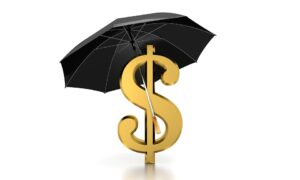
Professional Liability Insurance and You
 Courtesy of iii.org
Courtesy of iii.org
Do you or your business provide professional services or advice to other businesses or individuals? Could your counsel or service lead to losses by your client for which you could be held responsible? If so, you’ll likely want to purchase professional liability insurance, also known as errors and omissions insurance (E&O).
Claims not covered by general liability insurance that are covered by professional liability insurance include negligence, misrepresentation, violation of good faith and fair dealing, and inaccurate advice.
What types of businesses need professional liability insurance?
In some states, professional liability insurance is required, especially for attorneys and doctors. Legal and medical malpractice insurance policies are special types of professional liability insurance. Other professionals that should consider professional liability insurance include:
- Accountants
- Architects
- Engineers
- Graphic designers
- Information technology (IT) consultants
- Insurance professionals
- Investment advisors
- Management consultants
- Real estate agents and brokers
- Software developers
This list is not exhaustive. Consult with your insurance professional or inquire with your profession’s trade association to determine if you might need professional liability coverage.
What’s covered… and what’s not
There are two types of professional liability polices: claims-made and occurrence. Most professional liability insurance policies are “claims-made,” meaning that the policy must be in effect both when the event took place and when a lawsuit is filed for a claim to be paid. If, however, you change careers or retire, you may want to purchase an “occurrence” policy that will cover any claim for an event that took place during the period of coverage—even if the suit is filed after the policy lapses.
Professional liability insurance will pay the cost of legal defense against claims and payment of judgments against you, up to the limit of the policy. In general, coverage does not extend to non-financial losses or losses caused by intentional or dishonest acts. Other fees, such as licensing board penalties, may also be included. Policies will generally have a deductible ranging from $1,000 to $25,000. The amount of professional liability insurance you will need and how much it will cost depends upon the size of your business and the level of risk it poses.
You may be able to include professional liability coverage in a Commercial Package Policy (CPP) as an endorsement. Note, however, the professional liability coverage is not included in an in-home business policy or Business Owners Policy (BOP).

Do I Need an Umbrella Insurance Policy?
 Courtesy of iii.org
Courtesy of iii.org
If you are ever sued, your standard homeowners or auto policy will provide you with some liability coverage, paying for judgements against you and your attorney's fees, up to a limit set in the policy. However, in our litigious society, you may want to have an extra layer of liability protection. That's what a personal umbrella liability policy provides.
An umbrella policy kicks in when you reach the limit on the underlying liability coverage in a homeowners, renters, condo or auto policy. It will also cover you for things such as libel and slander.
For about $150 to $300 per year you can buy a $1 million personal umbrella liability policy. The next million will cost about $75, and $50 for every million after that.
Because the personal umbrella policy goes into effect after the underlying coverage is exhausted, there are certain limits that usually must be met in order to purchase this coverage. Most insurers will want you to have about $250,000 of liability insurance on your auto policy and $300,000 of liability insurance on your homeowners policy before selling you an umbrella liability policy for $1 million of additional coverage.

Water Damage & Insurance
 Courtesy of iii.org
Courtesy of iii.org
Pop quiz: what’s one of the most common types of homeowners insurance claims? (Hint: it’s not fire.)
It’s water damage. Maybe that’s not surprising – it rains a lot in many places. But what may surprise you is that things like pipe bursts and broken appliances are increasingly the main causes of water damage in homes.
In insurance-speak, these are called “non-weather water damage claims.” Worryingly, these claims are happening more often and are getting a lot more expensive. A Best’s Review article reports that the average homeowners water damage claim is now over $6,700. Large losses (over $500,000) have doubled in number over the past three years. Non-weather water damage is now costing insurers (and their policyholders) billions in losses every year.
This is happening for several reasons. Our housing stock is aging, as is our infrastructure. More houses are being built and they’re getting bigger – many houses now have extra bathrooms and second-floor laundry rooms, which means more piping. (The story is probably different in Florida. You can read why that is here.)
But the worst part is that many – if not most – water damage claims are preventable. Inspecting pipes or conducting routine maintenance can go a long way. That’s where the internet of things (IoT) comes in. Smart devices and connected sensors installed on piping can detect leaks before they occur or before they cause too much damage. They’re basically smoke detectors, but for water.
And they work. Best’s Review noted that installing IoT devices can reduce water losses by up to 93 percent.
The Review quoted an IoT company CEO who claimed that leak detection devices could save insurers and their customers $10 billion every year.
Homeowners have admittedly been slow to install IoT to help detect leaks. But insurers are hopeful that raising awareness about the issue, offering policyholder incentives like premium discounts, and encouraging IoT installation during home construction will begin to turn the tide.
Update: Of interest, Washington state adopted a rule in 2018 that specifically mentions water monitors and water shut-off systems as permissible tools for an insurer’s risk reduction program.